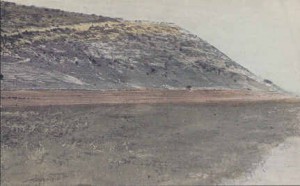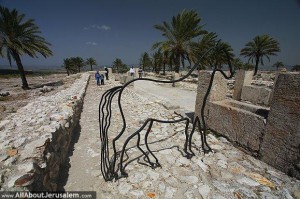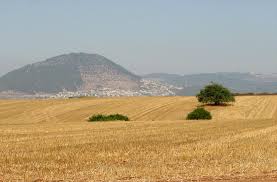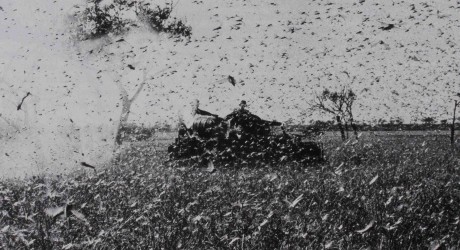In the Haftarah of Tetzaveh, the prophet Yehezekel tells the Jewish People in exile the precise dimensions of the altar of the final Temple.
Linear annotated translation of the Haftarah of Tetzaveh
The obvious connection between directions of the Mishkan (Tabernacle) and directions for the Third Temple turns out to have a deeper dimension when one actually compares the two texts: Tetzaveh – Atoning for the Atoner?
Here’s a bonus extra Midrash, which questions the timing of this prophecy:
כשהקב”ה מראה ליחזקאל את צורת הבית מה הוא אומר הגד את בית ישראל את הבית ויכלמו מעונותיהם ומדדו את תכנית (יחזקאל מג) אמר יחזקאל לפני הקב”ה רבש”ע עד עכשיו אנו נתונים בגולה בארץ שונאינו ואתה אומר לי לילך ולהודיע לישראל צורת הבית וכתוב אותו לעיניהם וישמרו את כל צורותיו ואת כל חוקותיו וכי יכולין הן לעשות הניח להם עד שיעלו מן הגולה ואח”כ אני הולך ואומר להם א”ל הקב”ה ליחזקאל ובשביל שבני נתונים בגולה יהא בנין ביתי בטל א”ל הקב”ה גדול קרייתה בתורה כבנינה לך אמור להם ויתעסקו לקרות צורת הבית בתורה ובשכר קרייתה שיתעסקו לקרות בה אני מעלה עליהם כאלו הם עוסקין בבנין הבית
When G-d showed the form of the House to Yehezkel, what did He say? “Tell the House of Israel about the House, and they will be ashamed of their sins, and measure the blueprint”. Yehezkel said before G-d, “Master of the Universe! We are in the throes of exile in the land of our enemies, and you are telling me to go and inform Israel about the shape of the house and write it before their eyes so they will keep its forms and laws. Is it possible for them to do this?! Let them be until they come out of exile, and then I’ll go and tell them.” G-d said to Yehezkel, “Just because My children are stuck in exile, the building of My house should be abandoned?” G-d said to him, “Reading it in the Torah is as great as building it. Go and tell them, and they will be involved in reading about the form of the House in the Torah, and in the merit of reading it, that they are involved in reading about it, I will count it for them as if they are involved in building the House.” (Midrash Tanchuma Tzav 14)
Like this:
Like Loading...





